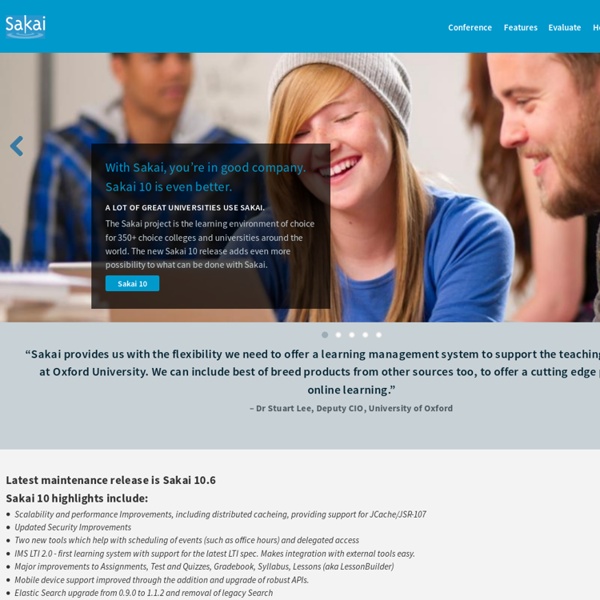



Chamilo - Chamilo Classic Campus Your do not have JavaScript support enabled in your browser. Chamilo relies heavily on JavaScript to provide you with a more dynamic interface. It is likely that most feature will work, but you might not benefit from the latest improvements in usability. Help Visita la web del evento: Empresas Proveedoras Oficiales de Chamilo LMS Portal news Últimos días descuentos de Pre-Venta Previous Next Wikiversity Learning management system - Wikipedia A learning management system (LMS) is a software application for the administration, documentation, tracking, reporting and delivery of electronic educational technology (also called e-learning) education courses or training programs.[1] LMSs range from systems for managing training and educational records to software for distributing online or blended/hybrid college courses over the Internet with features for online collaboration. Colleges and universities use LMSs to deliver online courses and augment on-campus courses. Corporate training departments use LMSs to deliver online training, as well as to automate record-keeping and employee registration. Characteristics[edit] History[edit] Purpose[edit] The key to understanding the difference between LMS and other computer education terms is to understand the systemic nature of LMS. Most LMSs are web-based to facilitate access to learning content and administration. LMS and CMS compared[edit] LMS and LCMS compared[edit] LMS Functionality
ECATHS Laboratorio de innovacion democratica Classroom Management Systems from Technology & Learning How to maximize control of a roomful of computers. My first computer lab consisted of 17 computers set up around the perimeter of the classroom. I could distribute and collect student files using 5.25-inch floppy disks and going from one computer to the next. Fast forward to now. View students' screens on the teacher's screen. Freeze/blank students' screens. Broadcast the teacher's computer screen to the students' screens. Broadcast a screen to the other students' screens. Communicate with students' computers. Control desktops. Copy files to/from computers. Remotely install software and product updates onto students' computers. Jeffrey Branzburg is a contributing editor and columnist for T&L.
Schoology La Ciencia por Gusto Twiducate COMPARTE | Comunidad de Aprendizaje Mahara AUSJAL :: Menú Superior
El Proyecto Sakai, 25 tiene su origen en la Universidad de Michigan y en la Universidad de Indiana, a las que se unieron el MIT y Stanford University, junto a la Iniciativa de Conocimiento Abierto (OKI) y el consorcio uPortal. Sakai es una herramienta 100% software libre, desarrollada en Java y que normalmente se distribuye en forma de binarios, archivos listos para su despliegue y puesta en marcha, o en forma de código fuente, código que es necesario compilar para poder usarlo, posee herramientas de administraciòn, generales de colaboraciòn, de enseñanza aprendizaje y herramientas de portafolios. by cbareno Nov 9